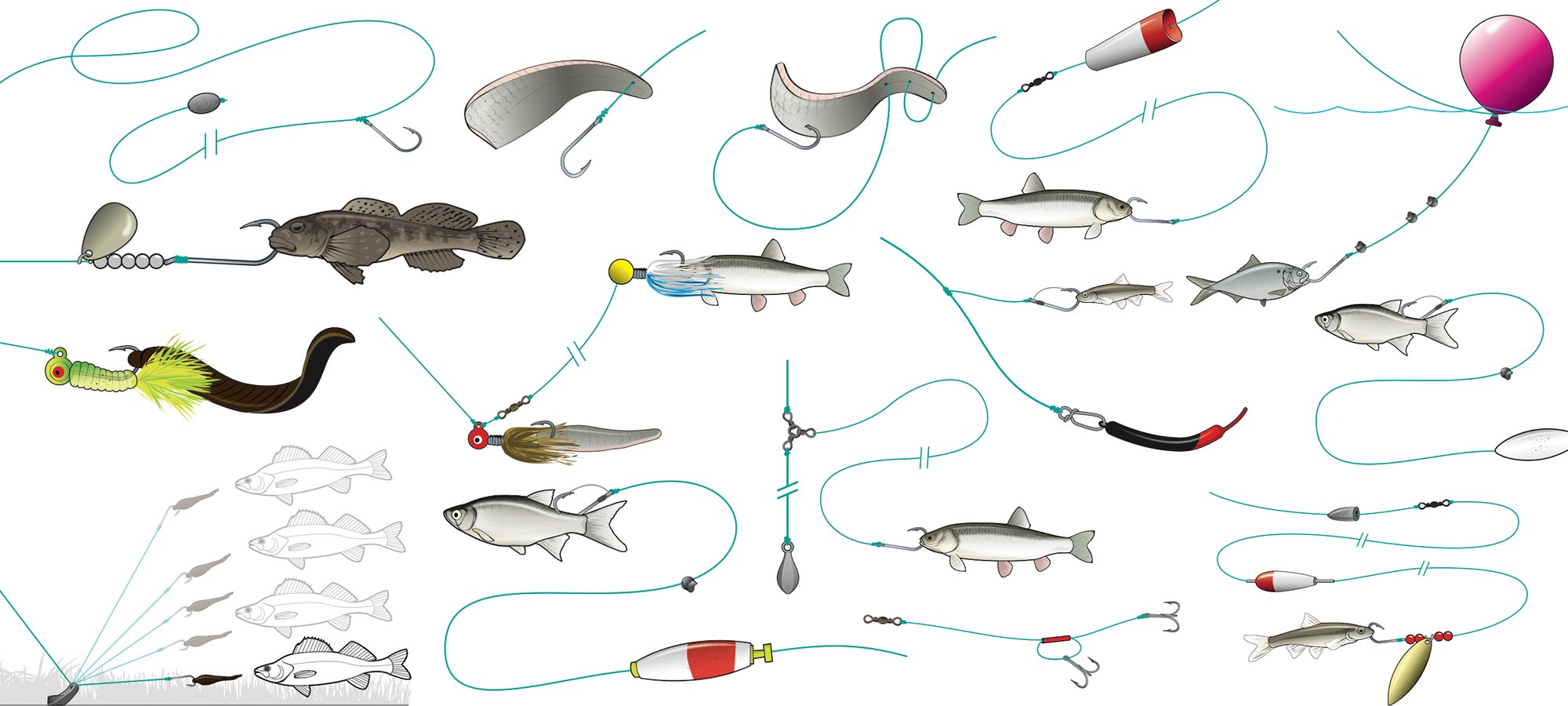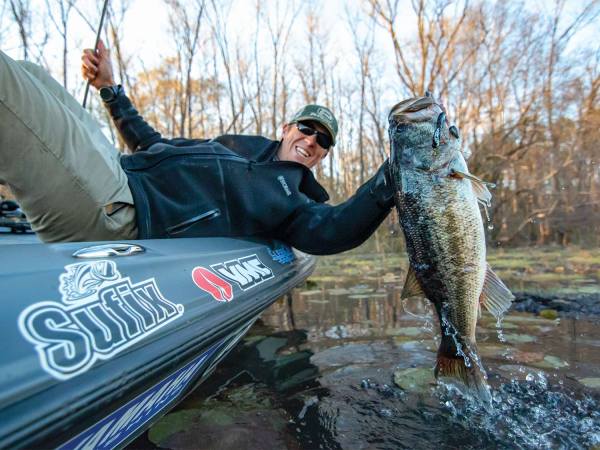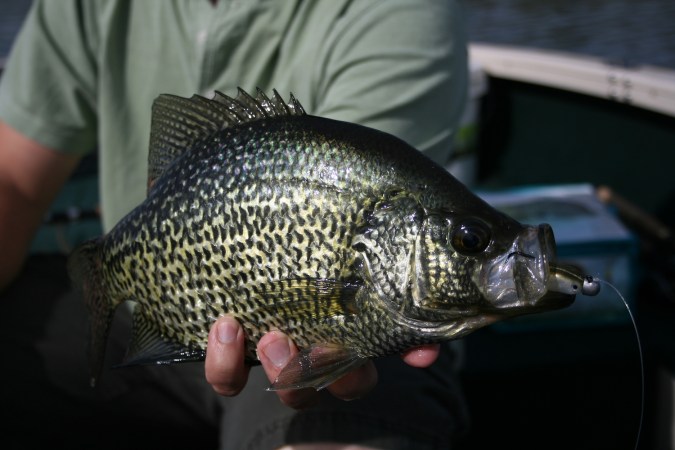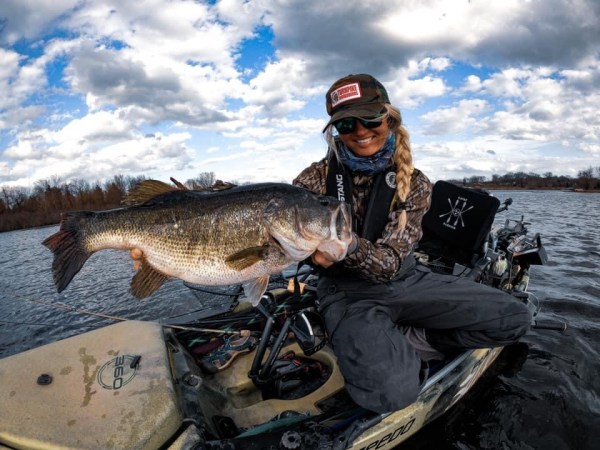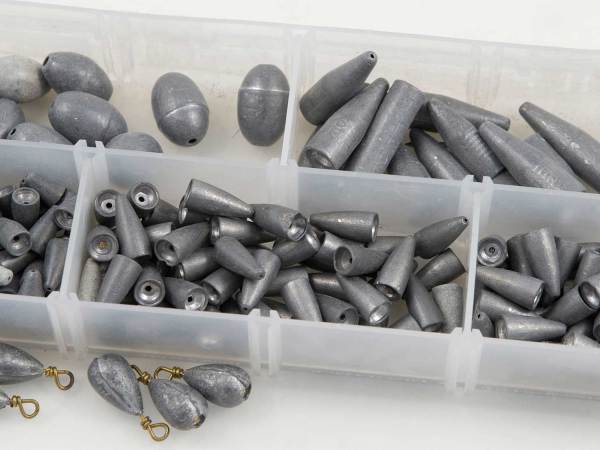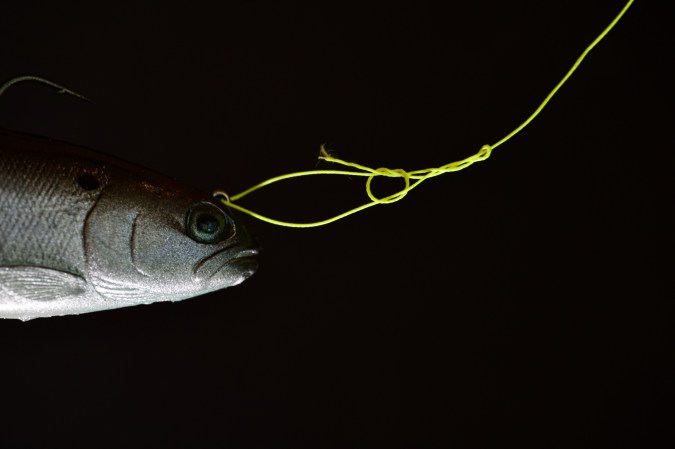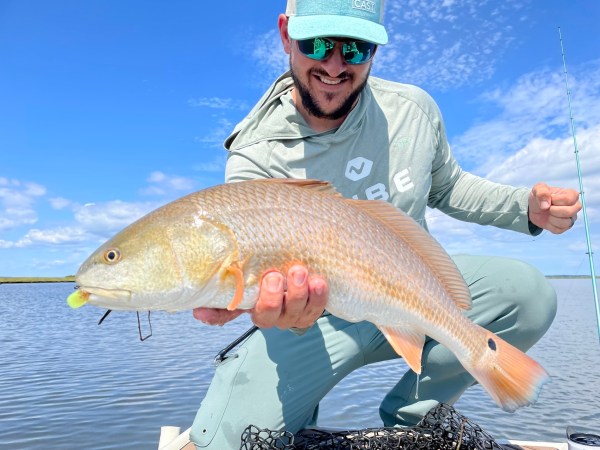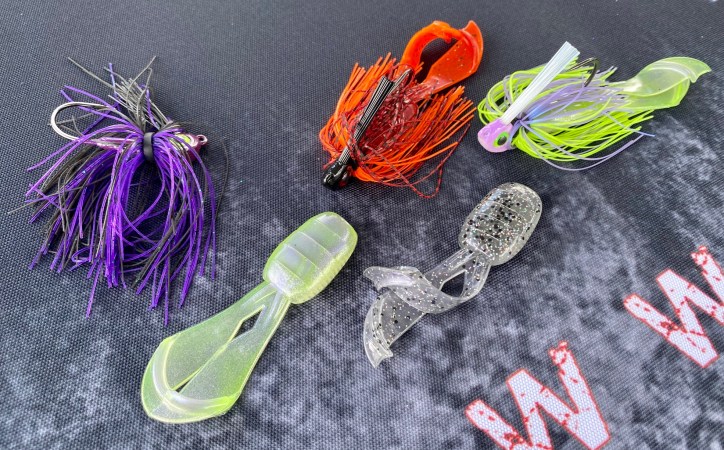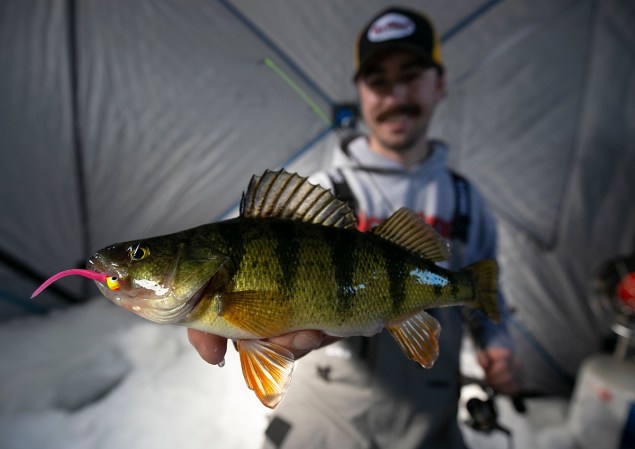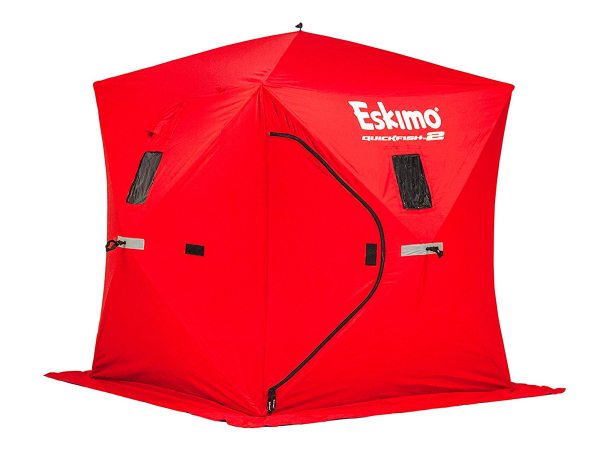We may earn revenue from the products available on this page and participate in affiliate programs. Learn More ›
We’re not here to take sides. We’re not here to end the debate forever. We are, however, here to say that there are times when rigging with bait—either live or dead—will outfish artificial lures, even in freshwater.
The following 15 natural bait rigs are among the best we’ve ever tried. So when your target species refuses to hit a soft-plastic, consider a more natural change in tactics.

Often, catfish, lake trout, salmon, pike, striped bass, and other heavyweights want nothing more than a fresh, whole chunk of their favorite baitfish, such as a chub, sucker, whitefish, or other oversized forage.
Then there are other times when a more diminutive slice of a favored forage species, such as a perch, bluegill (where legal), shiner, shad, or smelt will turn them on.
To rig, simply fillet the baitfish just as you would with a larger fish for eating, then thread on a whole side as shown. Leave the skin and scales on the meat to make the bait more durable.
Weave a hook two, three, or more times through the bait fillet and bury its point. Attach a sinker onto the fishing line ahead of the fillet according to depth and current flow and drift it through the fish zone.

Also known as a flicker rig, this search bait is outstanding for prospecting around rocks, docks, and pilings. The spinner blade attracts fish while the brightly-colored float suspends the bait up and away from hook-fouling cover.
To set up, run the main line through an egg, bullet, or flat (coin-shaped) sinker, and secure to a barrel swivel. Next, tie a three-foot leader of lighter line to the opposite end of the barrel swivel. Position a yellow or red float about one-foot from the leader’s end. (Some floats have plastic stoppers at their ends for sure positioning.)
Finally, thread a couple of small, bright-red plastic beads onto the leader, followed by a small, chrome or brass spinner blade and a 1 to 3/0 bait hook. Use a clevis with the spinner to improve its ease of rotation on the leader.

The beauty of this dropper rig is that split shot can be added or removed quickly depending on the depth and current you are working. If you get snagged on the bottom, the dropper typically breaks off, and you won’t lose the entire rig. It’s also a simple matter to adjust to rubble or weed-growth height by increasing or decreasing the length of the dropper line and number of split shot. The more rubble or high weeds on bottom, the longer the dropper line.
The barrel swivel in the rig helps prevent line-leader twist. In fact, some anglers tie the dropper line to the barrel swivel to diminish line twist even more. Bottom dropper rigs are excellent for fishing waters with current, especially rivers and streams for trout, salmon, smallmouths, and walleyes.

This bait rig features two jigs—one tipped with a strip of cut bait, and the other with live bait. It’s capable of catching fish on bottom and ones hovering just off of it, so don’t be surprised by double-headers.
Baitfish strips work well when tipped onto the deep jig, but a whole baitfish can be used, too, usually hooked through the lips or eyes onto the jig.
The live bait is usually a minnow, but a leech can be used on smallmouths and walleyes, or try a hellgrammite for trout and bronzebacks. This bait usually hovers well above the jig and strip, and the length of the leader from the barrel swivel to the bait hook determines this.
Ideally, the top bait eases along just above the tallest grass, sunken stumps, rock clumps, and gravel to avoid fouling.

Long a mainstay for redfish and speckled trout anglers, the popping cork rig has freshwater applications as well. To the uninitiated, a popping cork is a 3-to 5-inch long float made of cork, foam, or hard plastic. When popped, the cork simulates the sound of feeding gamefish. Hard popping is capable of drawing the attention of fish from long range, such as bass, stripers, smallmouths, and others. The popper stopper is a shallow-water rig, best used in water 6 feet or less.
To help prevent line twist and prevent the cork from sliding, position the float on the fishing line above a small swivel. Next, tie a fluorocarbon leader between the swivel and bait hook.
To work it, cast and begin popping once the float has settled. Continue a pop-and-pause retrieve every few seconds. When a fish hits, the float is pulled under, so it serves double duty as a strike indicator. Be sure the cork is large enough to hold big baits near the surface.

It’s challenging to catch big fish such as bass, walleye, trout, pike, and even oversized crappies from structure. Further, it can also cost you a lot of terminal tackle unless you’re rigged right. Here’s a highly touted method for fishing brush, stumps, and flooded timber. Although minnows and shiners are usually used with this rig, it will work just as well with crawfish, leeches, and hellgrammites. Best of all, it’s simple.
To rig, tie a snap to the end of the main line and attach a Lindy No-Snagg Sinker. Next tie a length of fluorocarbon leader and wire-guard bait hook 6 to 10 inches above the sinker. Tip with a shiner or other live bait, and you’re now able to work deep structure without snagging.
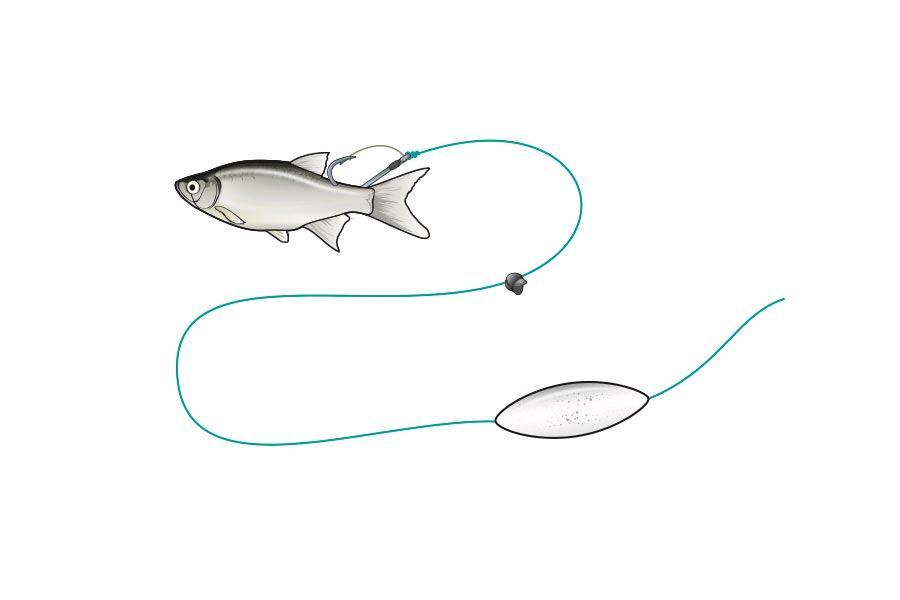
Because weed beds are fertile and hold food, it’s where you’ll also find the biggest predator fish such as bass, pike, muskies, and walleyes. This weedless bait rig will allow you to target those fish zones without getting caught around weed beds. Weedless rigs are simple to set up for fishing all manner of baits, including large live minnows, shiners, crawfish, and frogs.
Use a standard weedless hook, and hook your baits to minimize weed fouling. Frogs can be hooked in the upper leg to avoid snags, and minnows can be barbed behind the dorsal or anal fins to deflect vegetation.
Use a low-profile, torpedo-shaped float because it “slides” through weeds with ease, which prevents break offs from big fish following a strike.

Sometimes the simplest bait rigs are the best, and it doesn’t get any more basic than just tipping a jig with a natural bait, which is a killer tactic for big fish of almost any species.
The jig is one of the most versatile of all fishing lures, catching everything from stream trout, panfish, and walleyes to most species of fish inhabiting ponds and lakes. Tip a jig with a lively minnow, crawfish, earthworm, or leech and big fish are in trouble.
Fish this setup just about the same way you would a bare jig. A lift-and-drop retrieve is deadly, with the lure tickling the bottom. A “swimming” retrieve can produce big fish, especially in cool water and when working undulating bottom areas like riprap and sunken logs.
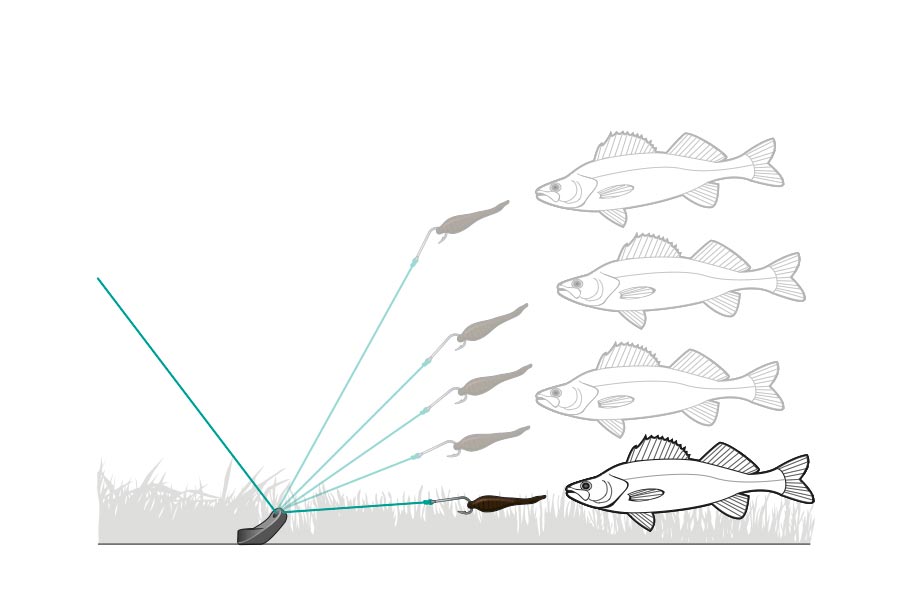
The length of the leader used with this bottom rig, especially a bottom-walking setup like a Lindy Rig or Carolina Rig, determines what depth a bait is best positioned. This is critical to catching fish suspended off bottom, including ones hovering in brush, stumps, and bottom grass.
Often fish can be “seen” with a sonar unit, which aids in selecting your leader length. You should usually fish baits right at the depth of fish, or slightly above them. That depth is determined by speed of retrieve (drift or troll) and leader length. Generally, the longer the leader, the “higher” a bait or lure that’s fished above bottom.

This is a great rig with a wide variety of applications. It’s most often used with live bait fished from a stationary position, such as a dock, jetty, bridge, break wall, shoreline, dam, or anchored boat. But it also can be used for drifting.
It’s a good way to get a bait well away from an angler, as wind and current pull a balloon with bait in tow. Big baits can even be fished very deep by using heavy sinkers and larger balloons.
The beauty of the rig is the convenience of carrying small, party-style balloons in a tackle box, as they can be inflated quickly when needed. Another plus for balloons is that when a fish strikes, the balloon is taken underwater, where it breaks under pressure, but stays tied to the line, so rubber debris doesn’t foul the environment.

The 3-Way Swivel Rig is one of the most versatile of all terminal fishing set-ups, and is useful for everything from panfishing in a local pond, to soaking big baits for pike, striped bass, and catfish.
Basically, connect the fishing line to one ring of a 3-way swivel. Then tie a hook for bait to another ring of the swivel with a short leader. On the third ring of the swivel, tie another leader and attach a dipsey or bank-style sinker. It’s wise to use lighter line for the leader going to the sinker than that of the fishing line or bait leader, so if the weight fouls bottom, that line is most likely to break, and only the weight will get lost, rather than the whole rig.
3-way swivel rigs can be cast from shore, boat, and even can be slow trolled and drifted effectively. They serve well in river or current, and in some locales, it’s known as a “river rig.”

This tandem treble hook rig is usually made of wire, but some anglers have begun making it with heavy braided line, 100-pound test and more, and even stout fluorocarbon line. However, because most target species for the rig are large northern pike and muskies, wire is generally used due to their sharp teeth.
Single strand wire works, but to make it easier to build this rig, multi-strand wire is more the norm. With multi-strand, wire crimps are needed.
Variations of this rig are widely used. The one shown here has two oversized trebles that are designed for large bait–often a 5- to 8-inch sucker minnow. One hook from the forward treble usually is positioned at the minnow head, or just behind it. The second hook is barbed about mid-bait, or sometimes at the tail.
The purpose of the rig is to “quick strike” a taking fish, so it is barbed in the mouth, but not so deep that it can’t be unhooked and released quickly.
Sometimes a spinner blade is fitted ahead of the lead hook–often with a clevis or beads. Use haywire twists at the rear hook and swivel connections for single-strand wire and crimps for multi-strand wire.
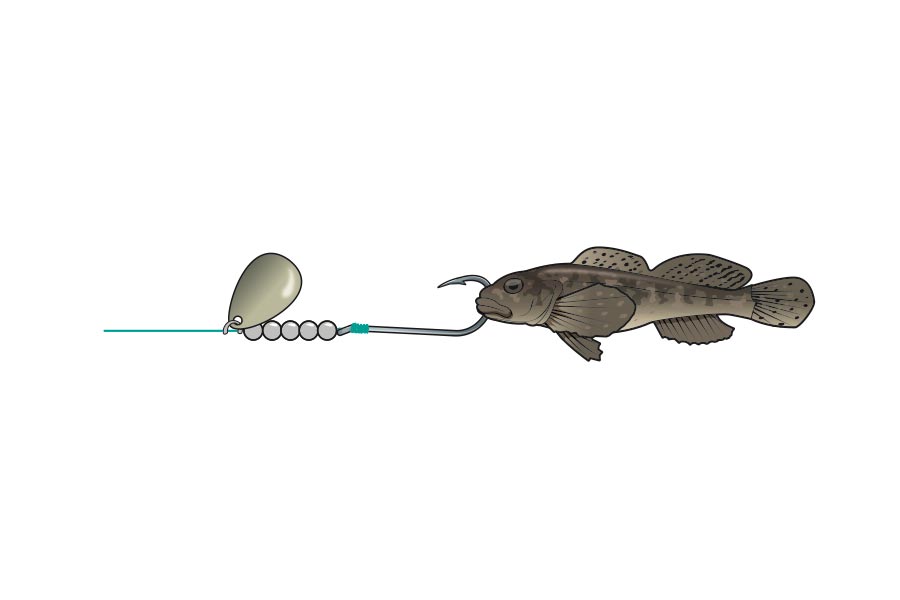
Fitting a natural bait such as a minnow on a hook with a spinner attached is a quick and deadly way to add more appeal to an already great fishing lure. The flashing of a spinner gets the attention of most gamefish, and the scent and action of a bait draw strikes from wary, oversized predators.
In trout streams and rivers, a sculpin minnow setup like this is one of the most deadly big trout offerings ever devised–especially on broad, deep Western waters. But sculpins work coast to coast on trout, smallmouths, and even walleyes.
A wide variety of spinners can be used, including some designed specifically for bait use, such as those common to walleye angling. Weighting the spinner to keep a rig and bait near the bottom is also good since sculpin minnows are bottom dwellers.

Sound in artificial lures has been a significant improvement for many years, and the same concept works great to make natural baits more appealing and easier for gamefish to locate.
This rig utilizes a pair of sliding weights that are fitted on the fishing line ahead of a hooked bait. Below the sliding weights, is a removable split shot with “ears” that allow for it to be moved up or down the line to determine the depth that the bait is fished off bottom.
Some anglers prefer brass sinkers, believing the brass attracts fish better with a more audible sound underwater. Other weight styles besides bullet sinkers can be employed, such as pencil-style sliding sinkers and more rounded models like those used in Carolina rigs.
Additions to the rig also include glass beads and brass “tickers” between the sinkers and beads, which increase the fish-attracting sound.
Virtually any natural bait works well with this rig for targeting various big gamefish. From baitfish to crawfish, crickets to leeches, live eels to earthworms, this rig is a resounding success.

While most anglers use this rig for presenting soft plastic lures to fish, it’s a superb setup for a wide variety of natural baits and a host of big freshwater fish.
To set up a drop-shot rig, fit a sinker to the line end with a hook tied-in using a Palomar Knot above the weight (usually 1 to 4 feet off bottom). Nose hook a natural bait, and then lower the whole rig to a suspended fish zone. Using a depth finder, locate fish-holding structure, baitfish or gamefish, and then bring the suspended bait into areas where you expect a strike. Impart slight action to the lure with gentle twitches and hops, or simply quiver the rod tip.
It’s an excellent method for probing weed beds, shell bars, stumps, flooded timber, docks, and piers.
Straight, short-shank hook styles are preferred, and sometimes barrel swivels are needed above baits to prevent line twist. While almost any style sinker can be used for drop-shotting, many anglers prefer “quick release” or pinch-on weights that allow a fast lead change when desired.

